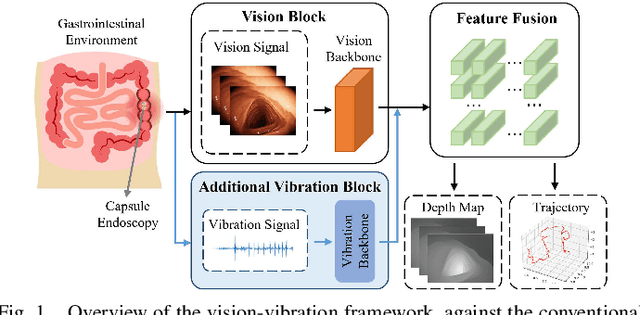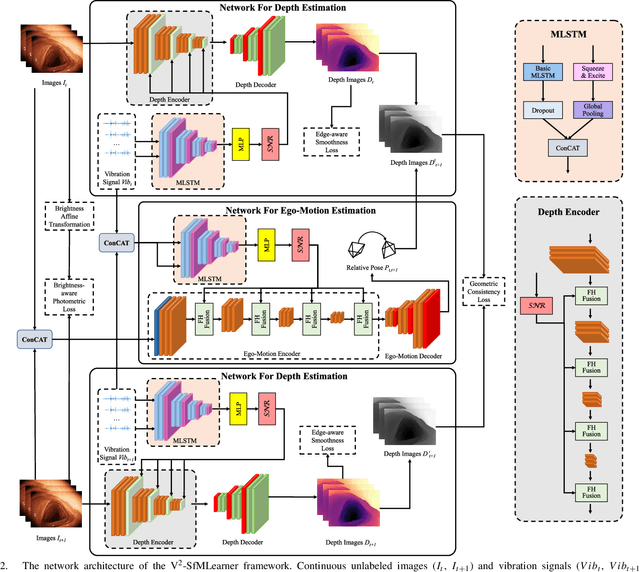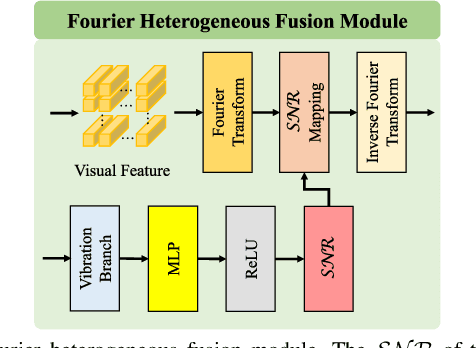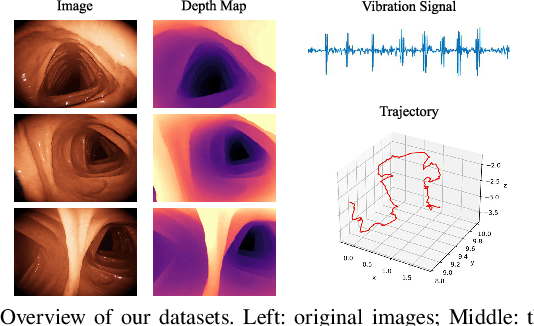Liangyu Wang
Free Lunch to Meet the Gap: Intermediate Domain Reconstruction for Cross-Domain Few-Shot Learning
Nov 18, 2025Abstract:Cross-Domain Few-Shot Learning (CDFSL) endeavors to transfer generalized knowledge from the source domain to target domains using only a minimal amount of training data, which faces a triplet of learning challenges in the meantime, i.e., semantic disjoint, large domain discrepancy, and data scarcity. Different from predominant CDFSL works focused on generalized representations, we make novel attempts to construct Intermediate Domain Proxies (IDP) with source feature embeddings as the codebook and reconstruct the target domain feature with this learned codebook. We then conduct an empirical study to explore the intrinsic attributes from perspectives of visual styles and semantic contents in intermediate domain proxies. Reaping benefits from these attributes of intermediate domains, we develop a fast domain alignment method to use these proxies as learning guidance for target domain feature transformation. With the collaborative learning of intermediate domain reconstruction and target feature transformation, our proposed model is able to surpass the state-of-the-art models by a margin on 8 cross-domain few-shot learning benchmarks.
FlashDP: Private Training Large Language Models with Efficient DP-SGD
Jul 01, 2025Abstract:As large language models (LLMs) increasingly underpin technological advancements, the privacy of their training data emerges as a critical concern. Differential Privacy (DP) serves as a rigorous mechanism to protect this data, yet its integration via Differentially Private Stochastic Gradient Descent (DP-SGD) introduces substantial challenges, primarily due to the complexities of per-sample gradient clipping. Current explicit methods, such as Opacus, necessitate extensive storage for per-sample gradients, significantly inflating memory requirements. Conversely, implicit methods like GhostClip reduce storage needs by recalculating gradients multiple times, which leads to inefficiencies due to redundant computations. This paper introduces FlashDP, an innovative cache-friendly per-layer DP-SGD that consolidates necessary operations into a single task, calculating gradients only once in a fused manner. This approach not only diminishes memory movement by up to \textbf{50\%} but also cuts down redundant computations by \textbf{20\%}, compared to previous methods. Consequently, FlashDP does not increase memory demands and achieves a \textbf{90\%} throughput compared to the Non-DP method on a four-A100 system during the pre-training of the Llama-13B model, while maintaining parity with standard per-layer clipped DP-SGD in terms of accuracy. These advancements establish FlashDP as a pivotal development for efficient and privacy-preserving training of LLMs. FlashDP's code has been open-sourced in https://github.com/kaustpradalab/flashdp.
ZO2: Scalable Zeroth-Order Fine-Tuning for Extremely Large Language Models with Limited GPU Memory
Mar 16, 2025Abstract:Fine-tuning large pre-trained LLMs generally demands extensive GPU memory. Traditional first-order optimizers like SGD encounter substantial difficulties due to increased memory requirements from storing activations and gradients during both the forward and backward phases as the model size expands. Alternatively, zeroth-order (ZO) techniques can compute gradients using just forward operations, eliminating the need to store activations. Furthermore, by leveraging CPU capabilities, it's feasible to enhance both the memory and processing power available to a single GPU. We propose a novel framework, ZO2 (Zeroth-Order Offloading), for efficient zeroth-order fine-tuning of LLMs with only limited GPU memory. Our framework dynamically shifts model parameters between the CPU and GPU as required, optimizing computation flow and maximizing GPU usage by minimizing downtime. This integration of parameter adjustments with ZO's double forward operations reduces unnecessary data movement, enhancing the fine-tuning efficacy. Additionally, our framework supports an innovative low-bit precision approach in AMP mode to streamline data exchanges between the CPU and GPU. Employing this approach allows us to fine-tune extraordinarily large models, such as the OPT-175B with more than 175 billion parameters, on a mere 18GB GPU--achievements beyond the reach of traditional methods. Moreover, our framework achieves these results with almost no additional time overhead and absolutely no accuracy loss compared to standard zeroth-order methods. ZO2's code has been open-sourced in https://github.com/liangyuwang/zo2.
V$^2$-SfMLearner: Learning Monocular Depth and Ego-motion for Multimodal Wireless Capsule Endoscopy
Dec 23, 2024



Abstract:Deep learning can predict depth maps and capsule ego-motion from capsule endoscopy videos, aiding in 3D scene reconstruction and lesion localization. However, the collisions of the capsule endoscopies within the gastrointestinal tract cause vibration perturbations in the training data. Existing solutions focus solely on vision-based processing, neglecting other auxiliary signals like vibrations that could reduce noise and improve performance. Therefore, we propose V$^2$-SfMLearner, a multimodal approach integrating vibration signals into vision-based depth and capsule motion estimation for monocular capsule endoscopy. We construct a multimodal capsule endoscopy dataset containing vibration and visual signals, and our artificial intelligence solution develops an unsupervised method using vision-vibration signals, effectively eliminating vibration perturbations through multimodal learning. Specifically, we carefully design a vibration network branch and a Fourier fusion module, to detect and mitigate vibration noises. The fusion framework is compatible with popular vision-only algorithms. Extensive validation on the multimodal dataset demonstrates superior performance and robustness against vision-only algorithms. Without the need for large external equipment, our V$^2$-SfMLearner has the potential for integration into clinical capsule robots, providing real-time and dependable digestive examination tools. The findings show promise for practical implementation in clinical settings, enhancing the diagnostic capabilities of doctors.
 Add to Chrome
Add to Chrome Add to Firefox
Add to Firefox Add to Edge
Add to Edge